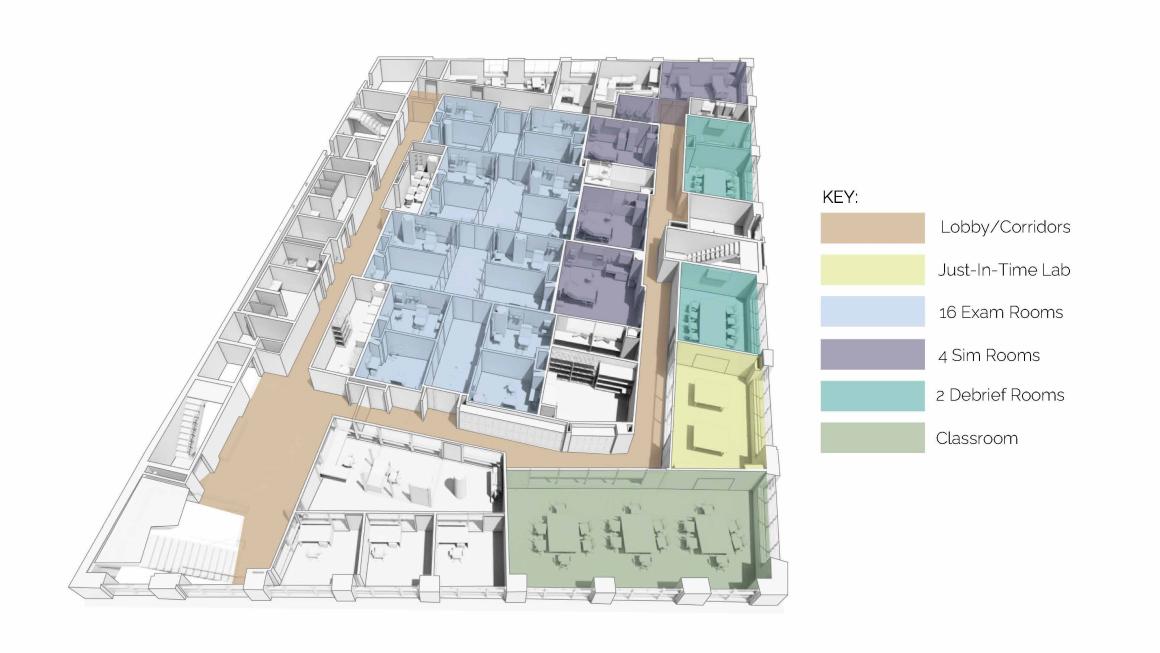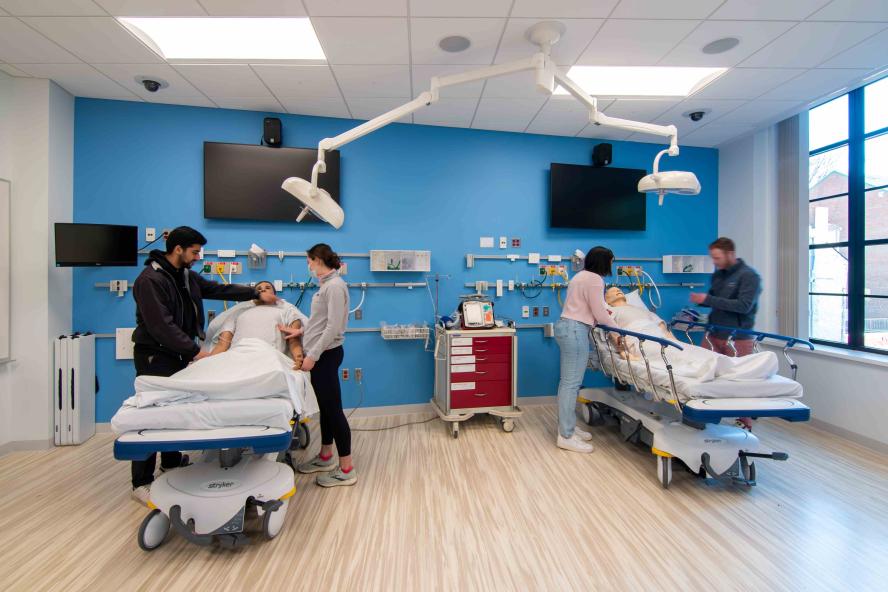-
About
-
Academics
- Physician Assistant
- Special Master’s (MBS)
-
Admissions & Financial Aid
- Tuition & Fees
-
Student Life
-
Research
- Research Labs & Centers
-
Local & Global Engagement
- Global Health Program
Thompson Sim Center Spaces
Floor Plan
Exam Rooms
Designed and equipped to simulate a clinic, these spaces are where students work with faculty instructors, volunteers, and standardized patients to gain experience and build skills in areas such as how to take a patient’s history, perform physical exams, and refine their bedside manner. Each room is fully wired for audio and video, so faculty members can watch students’ performances in adjacent monitor rooms or remotely and provide feedback or formal evaluations.
Simulation Rooms
In “Sim rooms”, students work individually or in small groups of 5-6 students using robotic patient simulator manikins to diagnose and treat a wide range of symptoms and scenarios. Whether their patient is an adult male, a pregnant woman, or an infant, students learn to navigate cues like verbal prompts, breathing patterns and sounds, vital signs and heart rhythms, and simulated bodily functions.
Control Rooms
From the control rooms, medical simulation specialists and faculty control and play the voice of the patient simulator (high fidelity manikin), observe students through two-way mirrors, and can intervene with real-time feedback when needed.
Debrief Rooms
Once a simulation or other clinical exercise has been completed, students and faculty remove themselves from the higher-stress environment of the sim room or exam rooms to convene in a debrief room. There, they review video of their procedure, self-critique, consider alternatives, and discuss major takeaways from their simulated experience.
Just-In-Time Space / Skills Rooms
The Just-In-Time Space provides students with off hour access to task trainers, which support students in becoming familiar with the scenarios, procedures, and other essential information that will guide their experience. Task trainers, or manikins built to help students practice certain medical procedures, offer a chance to practice techniques such as suturing, placing a central line, and intubation.
Standardized Patient Lounge
Standardized patient actors (SPs) are an essential part of Objective Structured Clinical Examinations, or OSCEs. Providing actors with a lounge where they can prepare and sequester themselves throughout exam day helps create a more realistic, believable, and immersive simulation experience for students.



